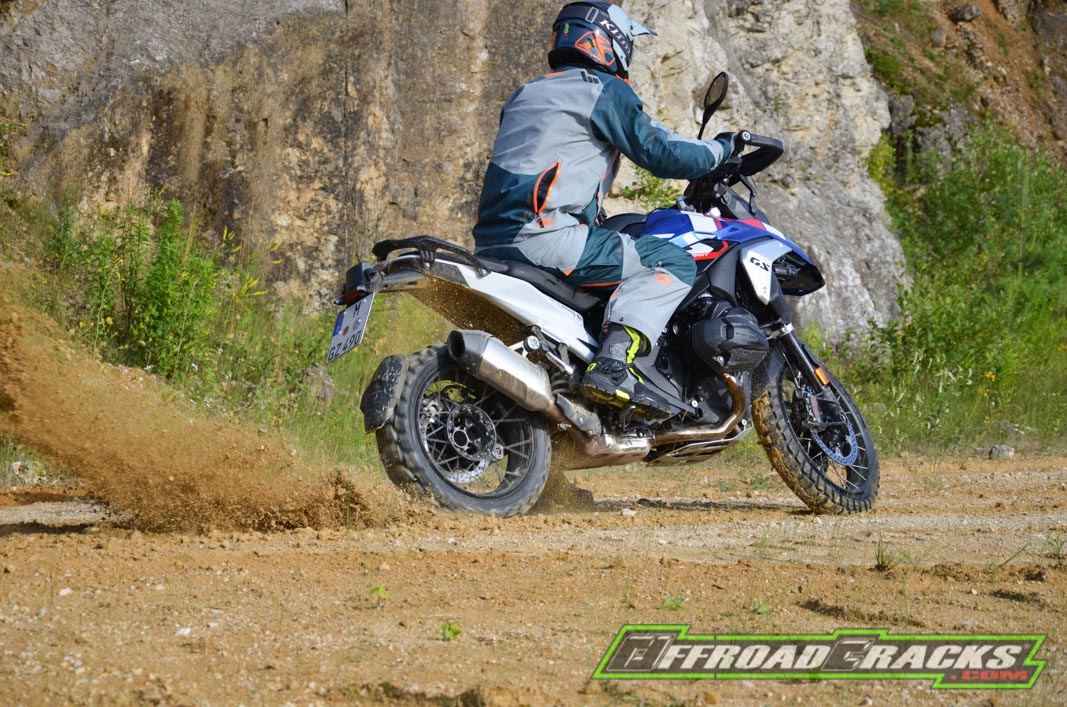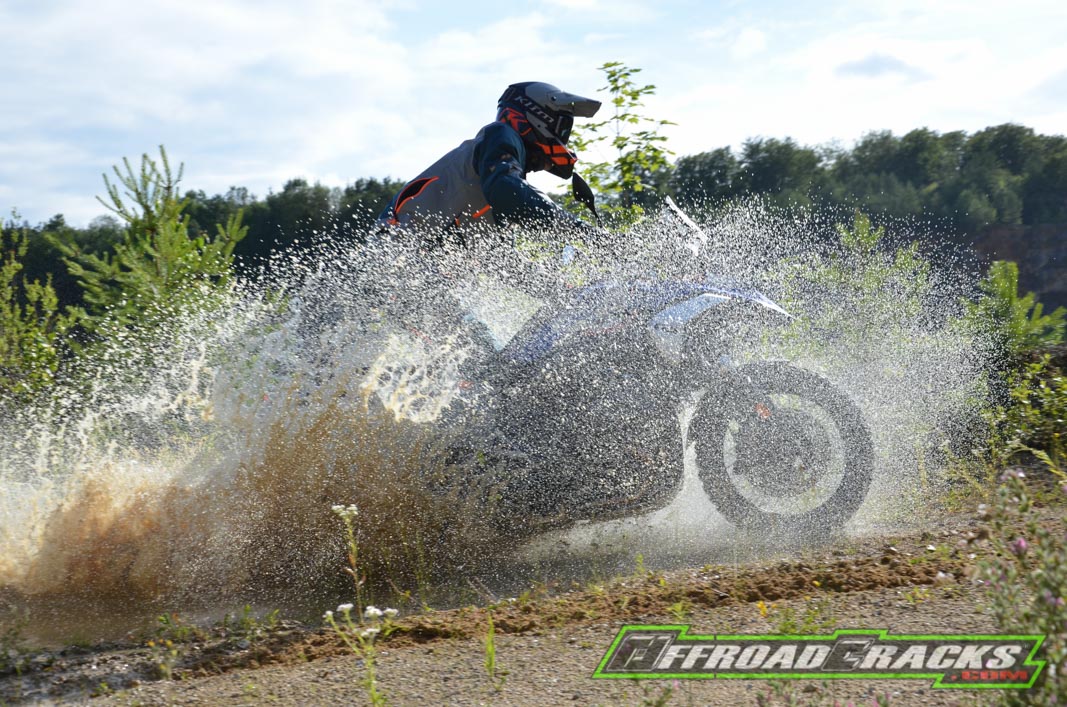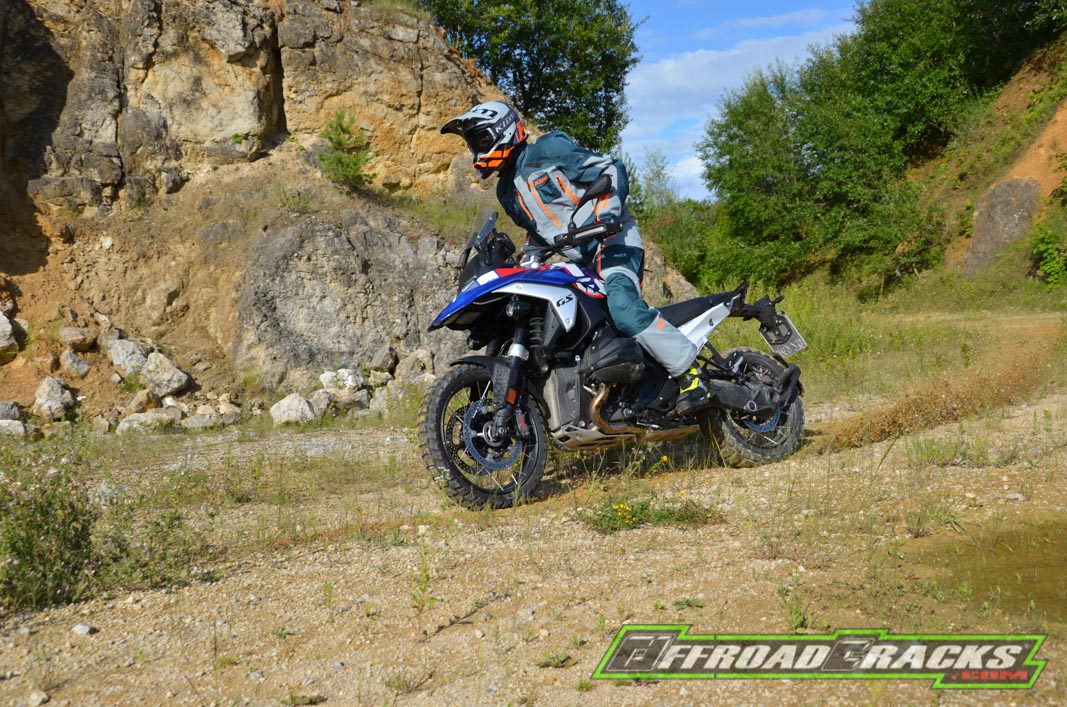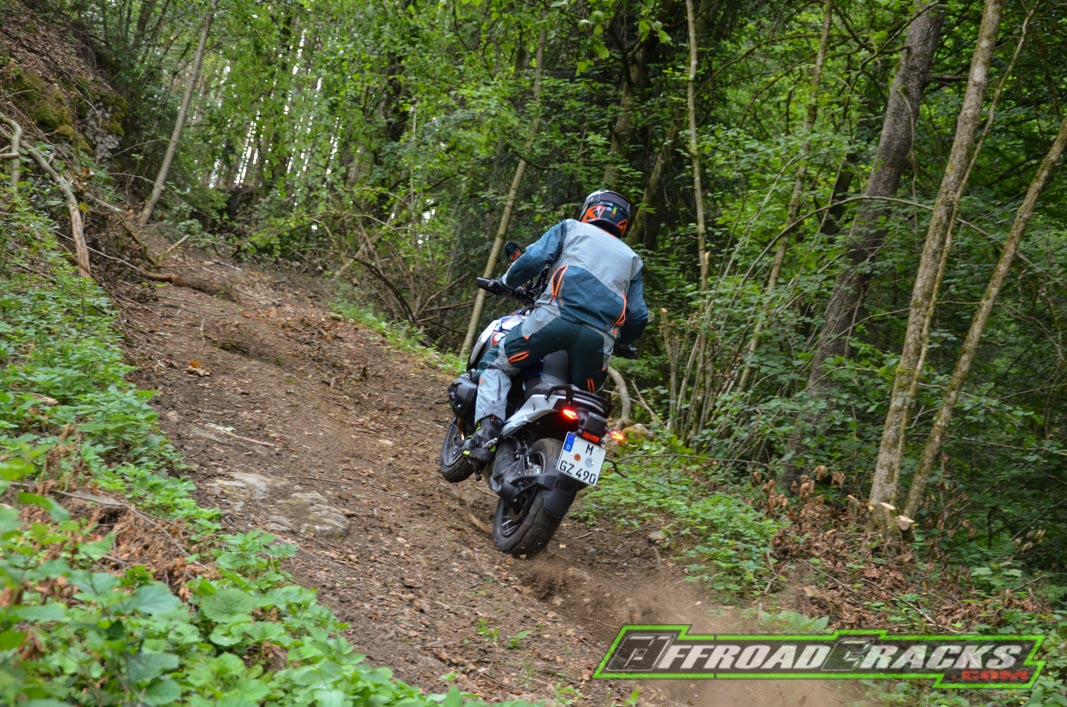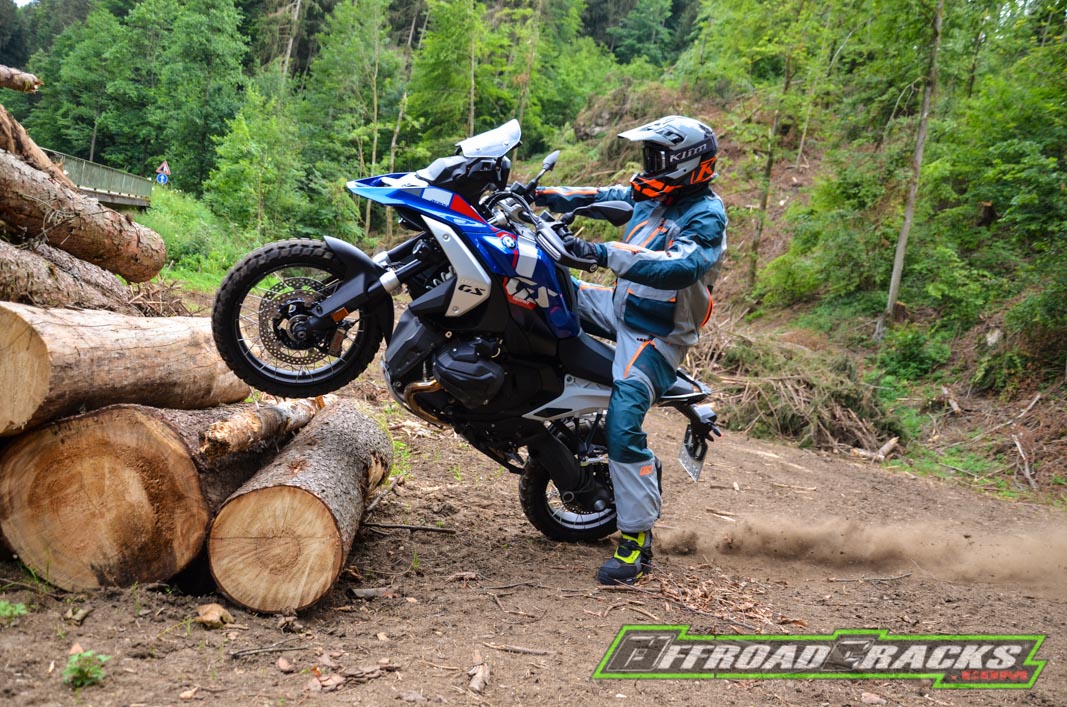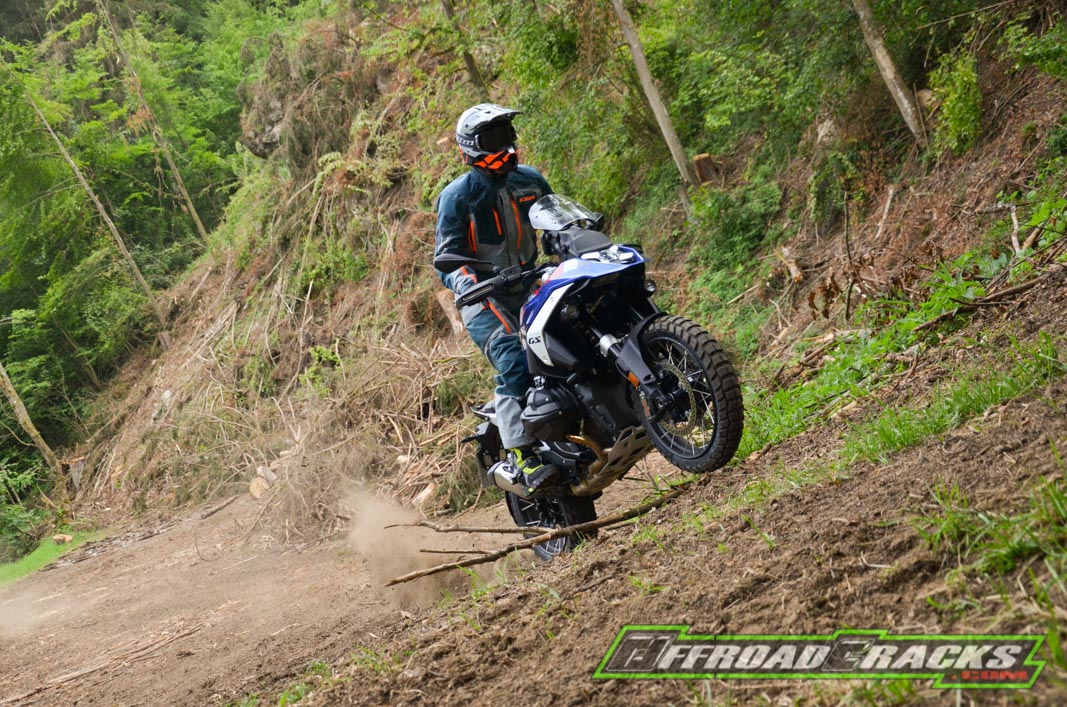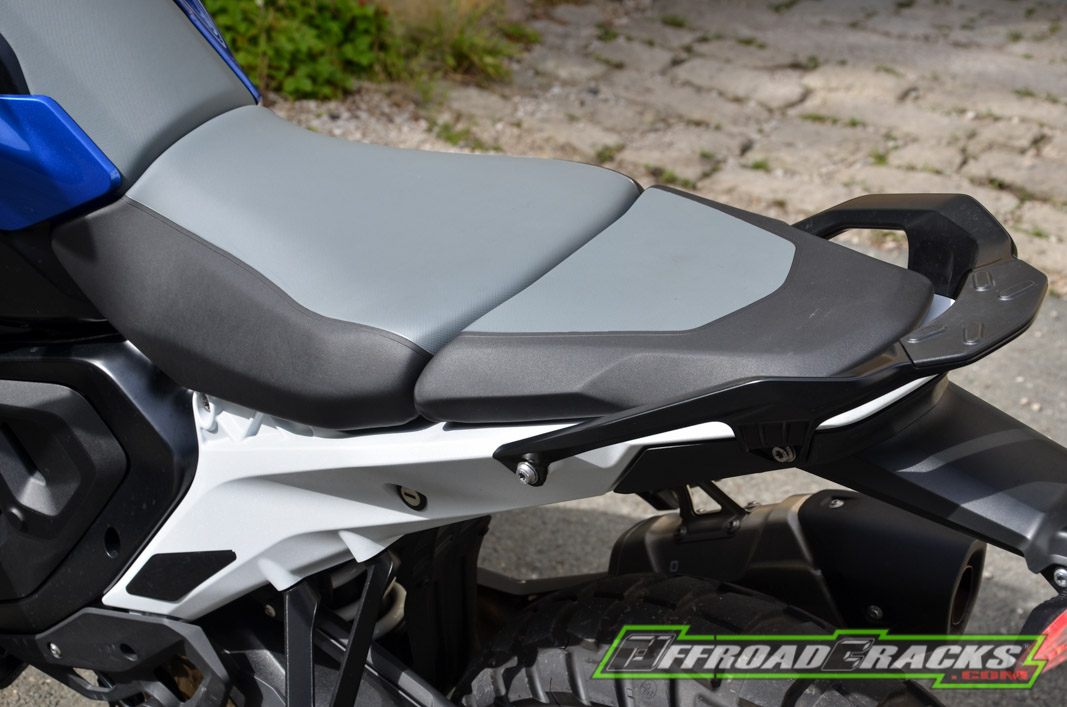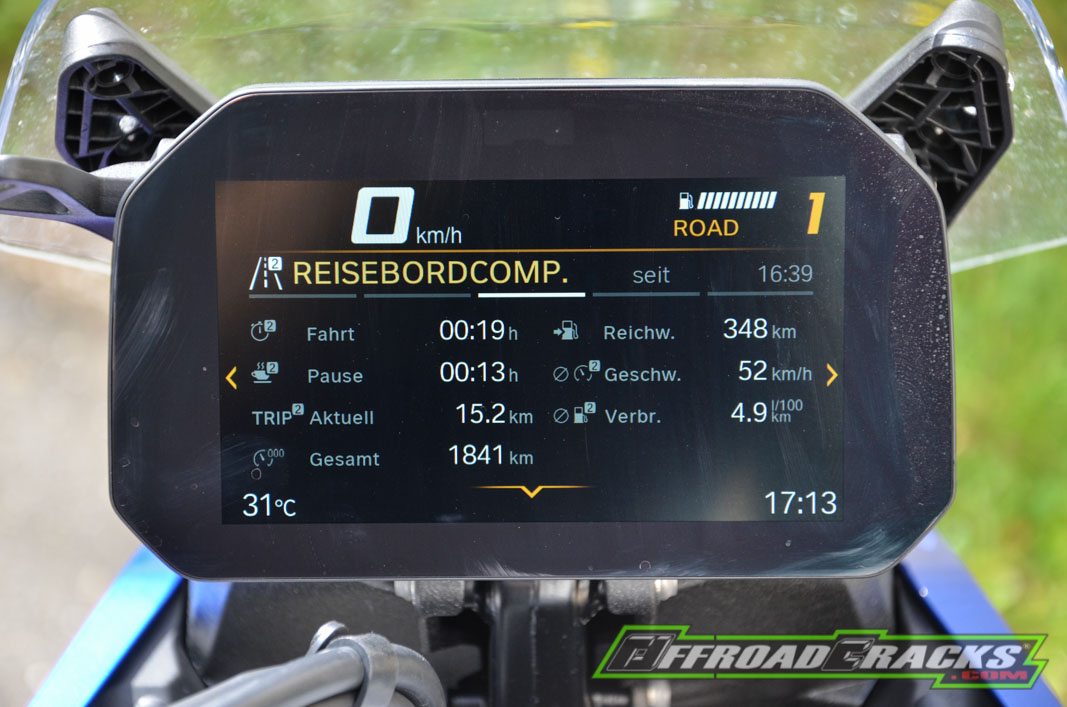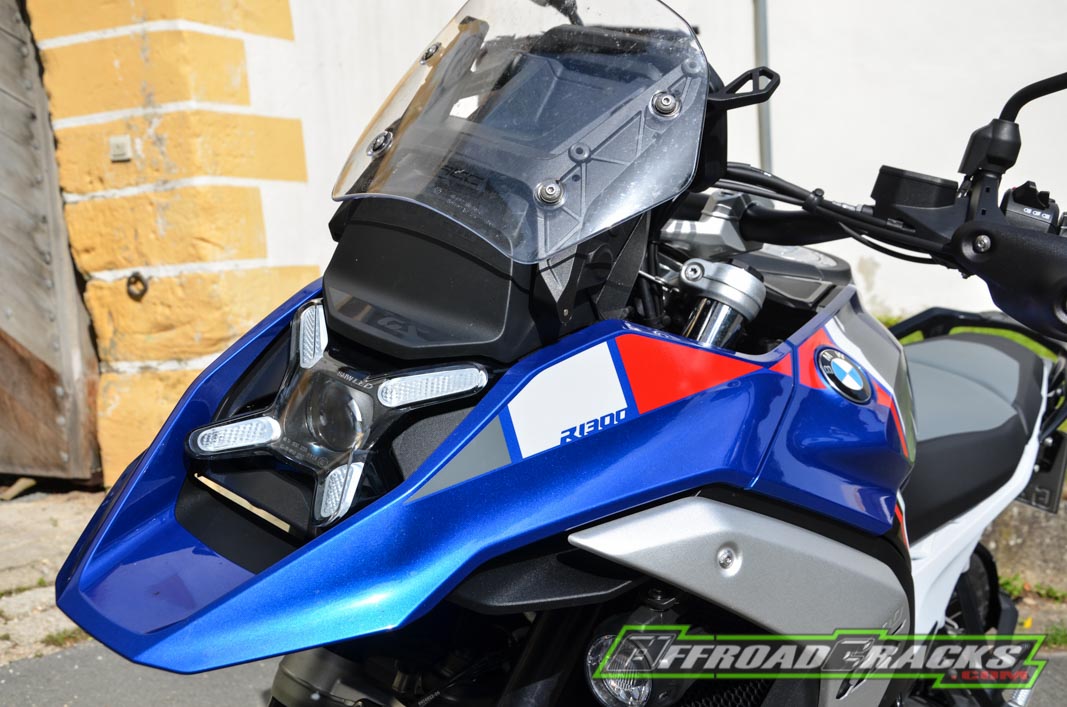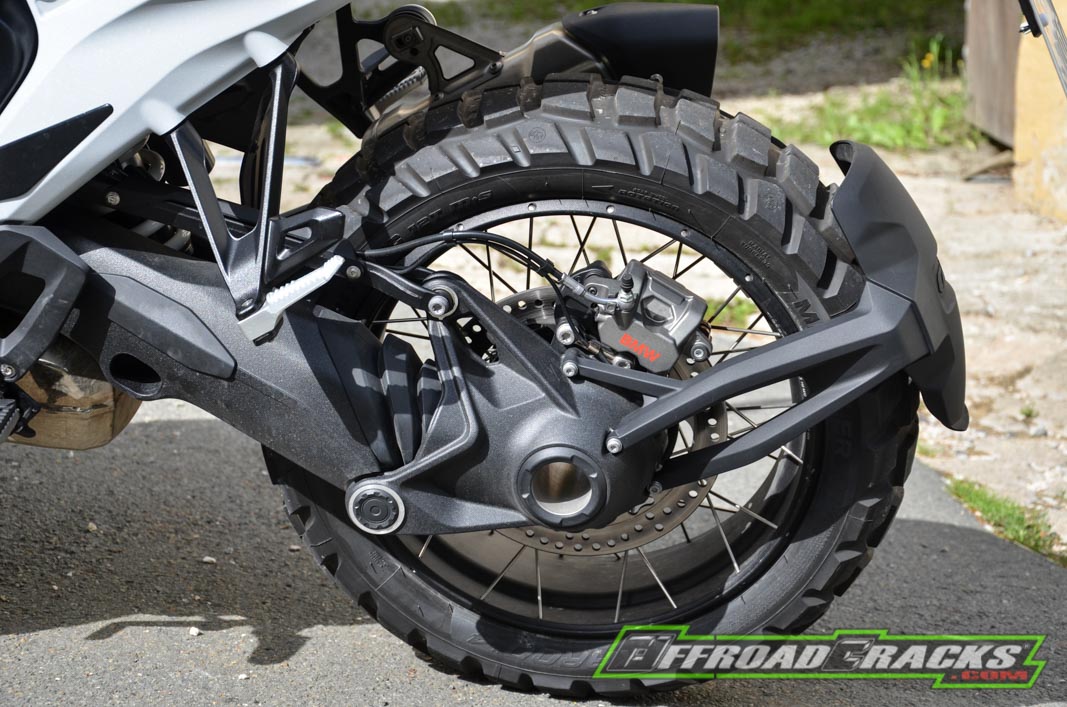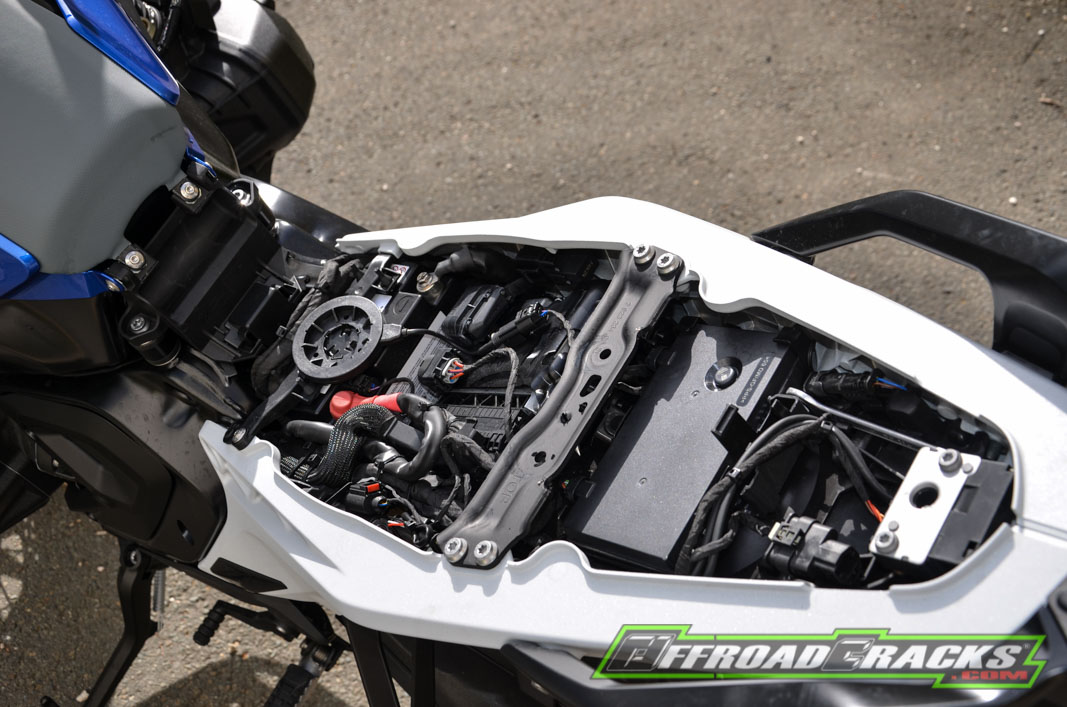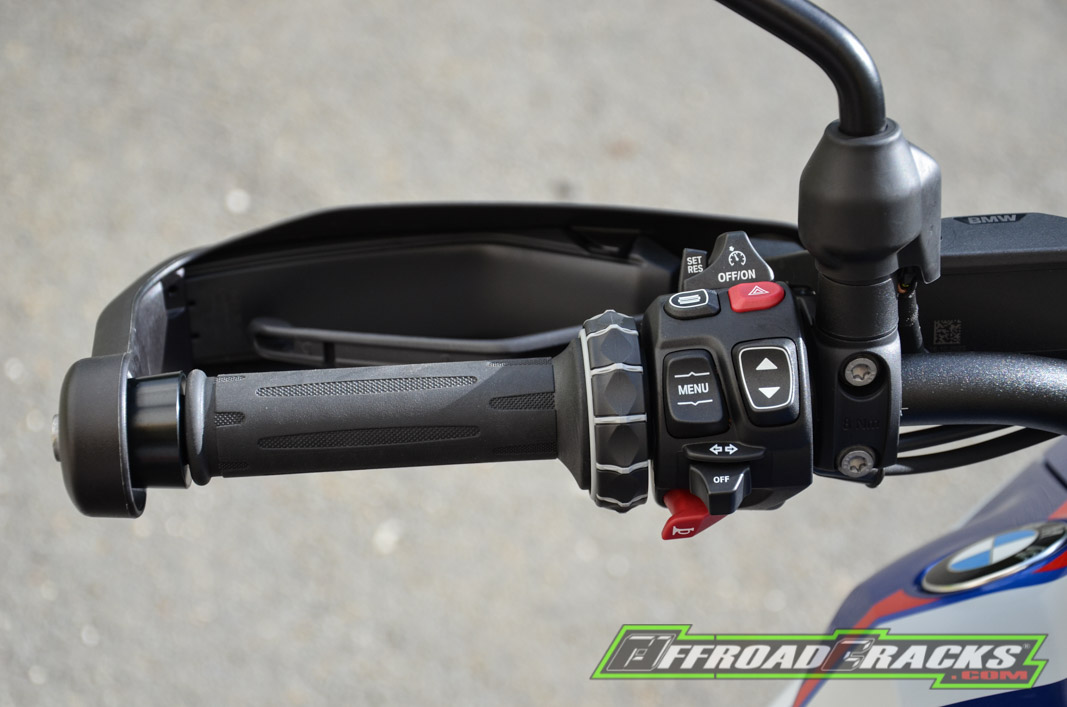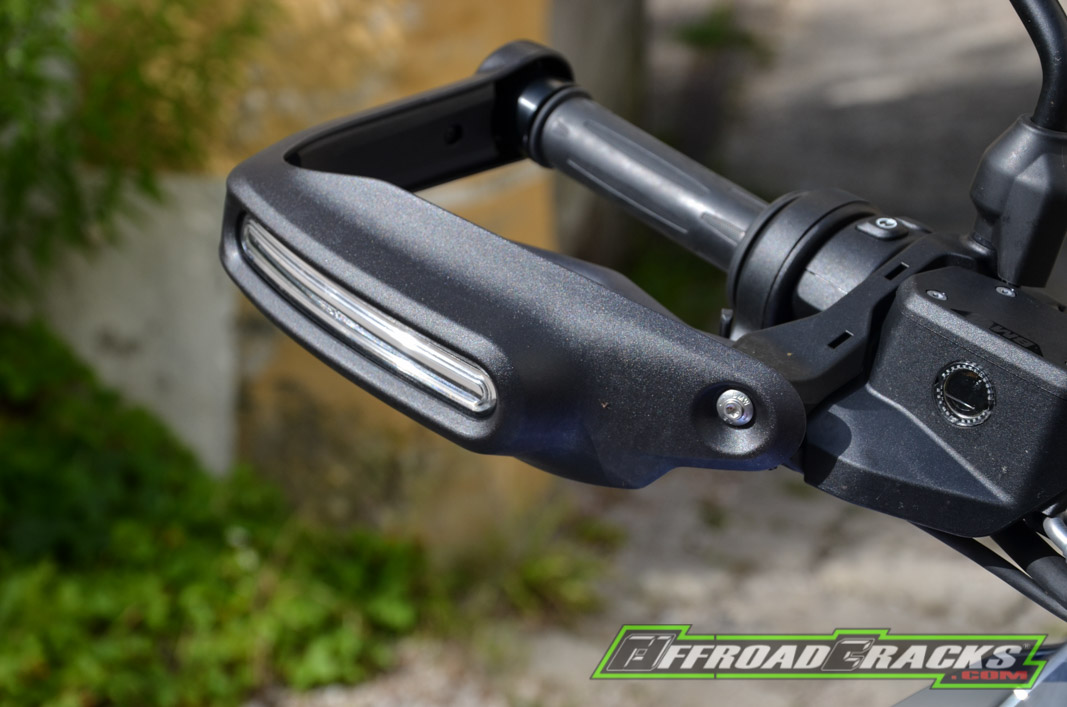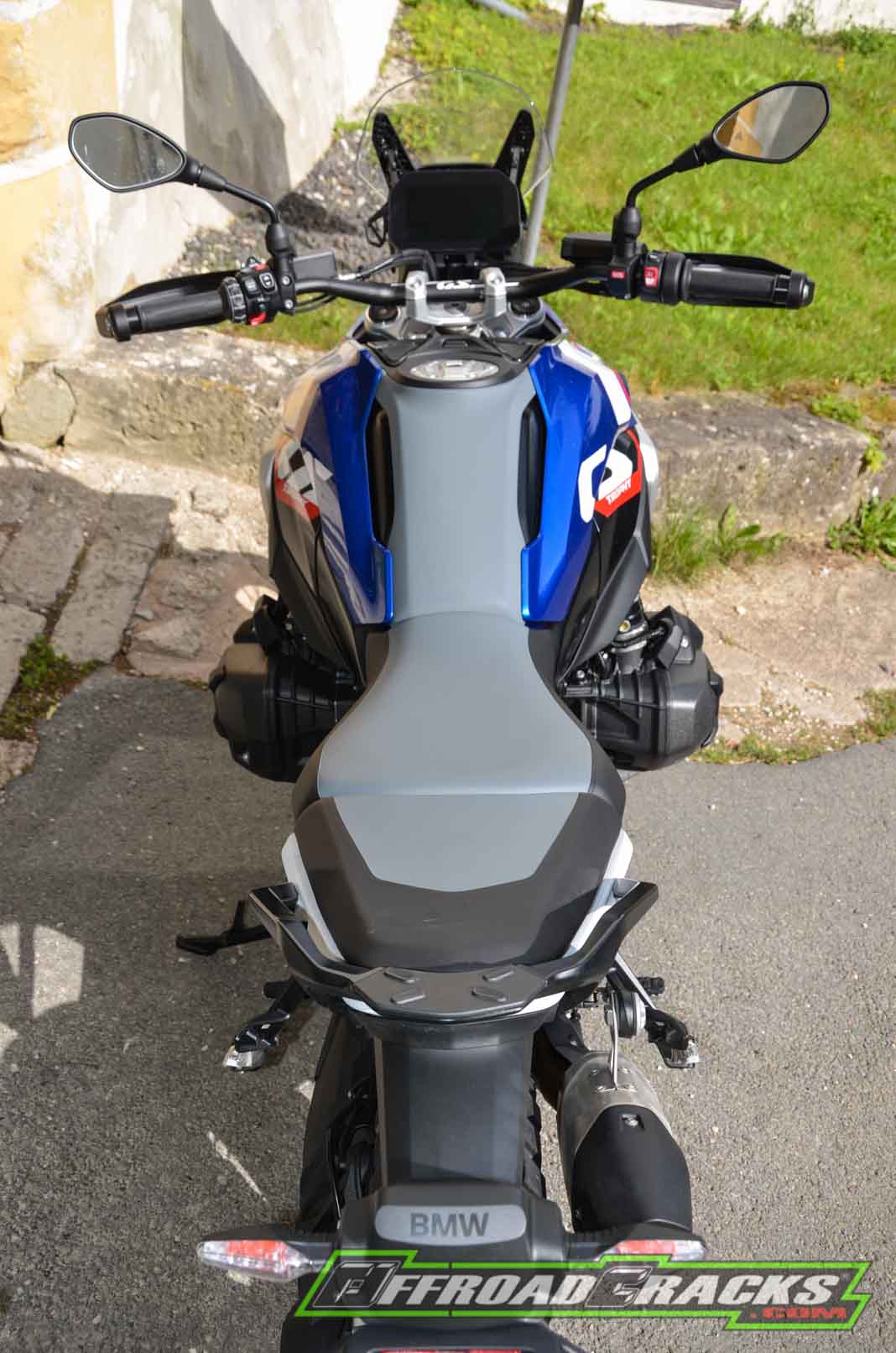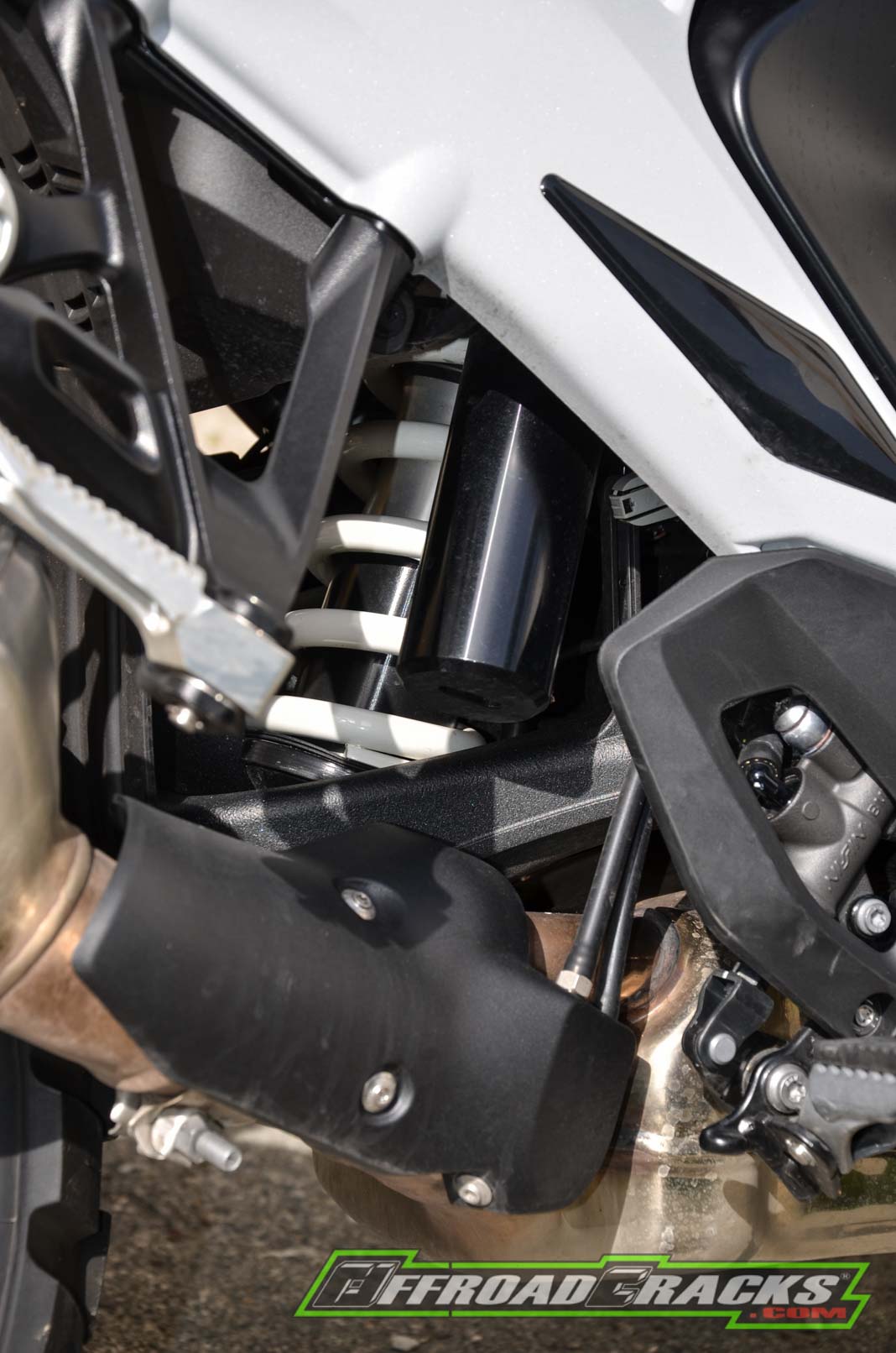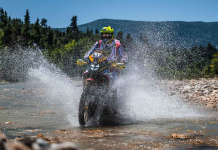
Das MUST HAVE der Reiseenduro-Fraktion ist seit Jahren nachweislich die GS-Baureihe aus Bayern. Mit der 1300er geht man neue Wege, die nicht nur bei Sascha Christof für Aufsehen sorgen.
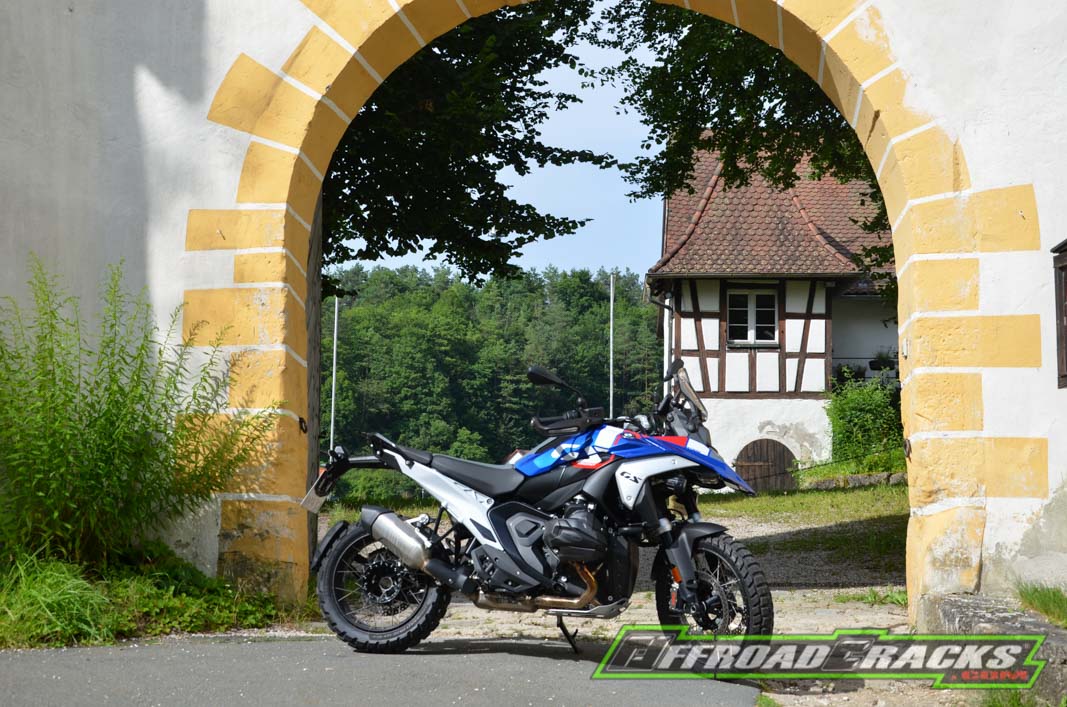
Hier und jetzt steht die R 1300 GS Trophy-Version am Start. Was sorgt hier für Aufsehen? Nimmt man auf ihr Platz habe ich zuerst nicht das Gefühl auf DER REISEENDURO schlechthin zu sitzen, sondern eher auf einem kompakten Streetfighter im optisch angehauchten Offroad-Design. Richtig gehört, die 1300er ist nach vorne gedrungen mit neuer Schwerpunktlage und einer Kompaktheit, die man von der GS-Baureihe bislang nicht gewohnt war. Die Sitzposition macht unverständlich klar: Hahn voll aufdrehen und dann wird’s heftig krachen. Wer noch die legendäre HP2 fahren durfte, könnte hier in freier Interpretation auf ein paar Ähnlichkeiten kommen.
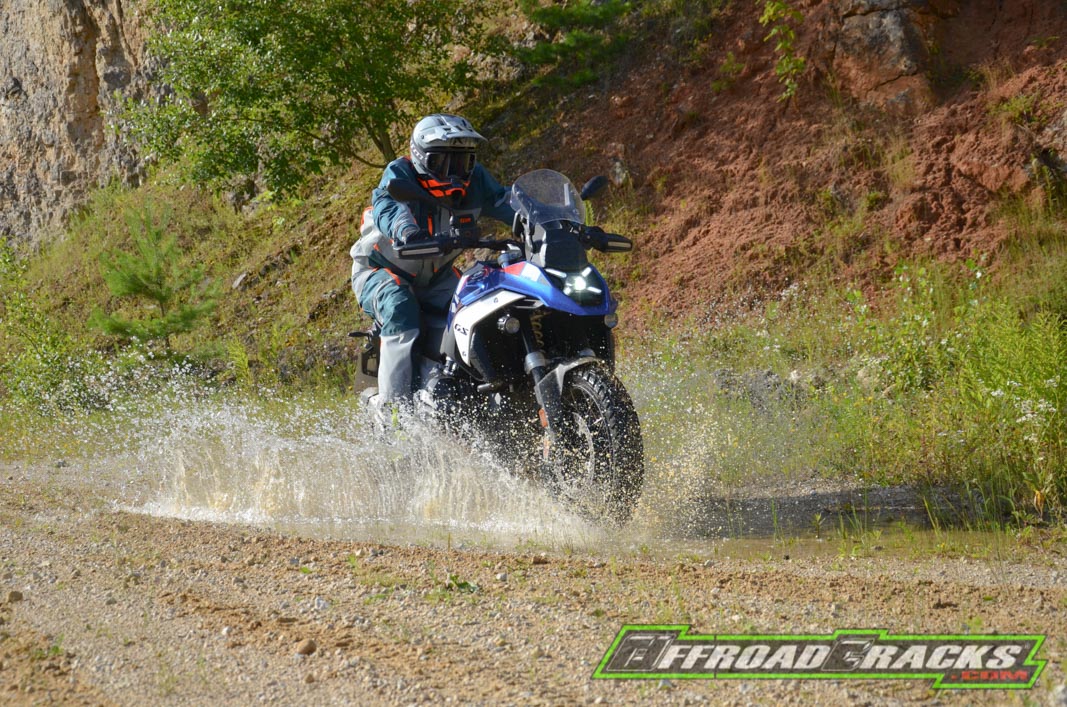
Nachdem das Testbike vom LKW geladen wurde, reizt mich die neue GS derart, dass ich einfach kurz mal auf eine kleine fünfminütige Asphalt-Testrunde musste. Im ersten Kreisverkehr beim Herausbeschleunigen blinkt plötzlich eine gelbe Lampe im Display auf. Kurz irritiert, bleibe ich dennoch am Gas und fahre zurück ins Redaktionsbüro. Beim näheren Hinsehen erkenne ich die DTC-Kontrollleuchte. Hat doch tatsächlich die 1300er GS beim leichten Beschleunigen das Hinterrad wegen Schlupf bei absolut trockenen Bedingungen einfangen müssen? Wie mächtig ist denn hier bitte die Drehmomententwicklung? Gut, montiert ist der Metzeler Karoo 4 mit Blockprofil, der schon mal früher einen Slide am Hinterrad einleitet, als ein gewöhnlicher Straßen-Pneu. Das wird ja noch interessant, dachte ich mir mit einem breiten Grinsen unter dem Helm.
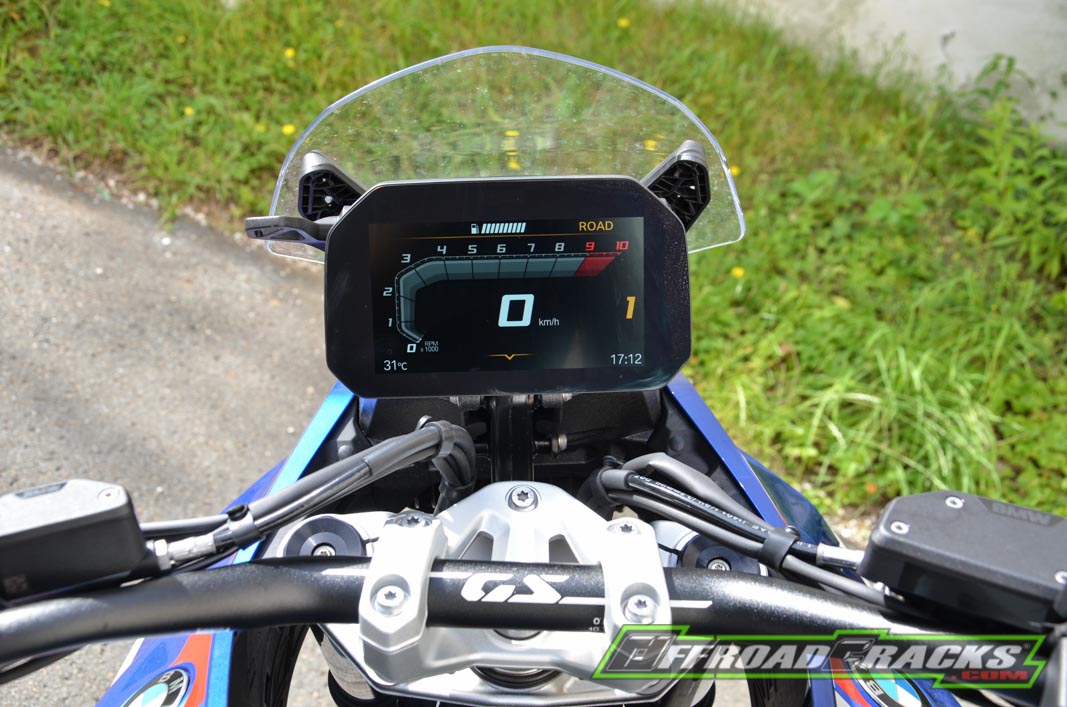
Tech-Talk: Um von ursprünglich 1254 Kubikzentimetern auf 1300 anzuwachsen, wurde die Zylinderbohrung der R 1250 GS um vier Millimeter und der Hub um drei erweitert. Dann schafft man noch etwas innerlichen Druck und verpasst ihr eine Zylinderverdichtung von 13,3, vorher 12,5, größere Ventildurchmesser sowie der Shift-Cam-Technologie, die drehzahl- und lastabhängig die Einlassnockenwellenprofile für Teil- und Volllast anpasst. Das hat in der Summe ein Leistungsplus von neun PS und einen Drehmomentzuwachs von sechs Newtonmetern. Wir sprechen hier also von 145 PS und satten 149 Newtonmetern Drehmoment. Braucht das eine Reiseenduro (Markteinführung: 2024)? Betrachtet man zudem das Gewicht von 237 Kilogramm erreicht die neue GS ein Leistungsgewicht von 1,63 kg/PS, was nicht zu verachten ist. Zum Vergleich: Eine leichte 500er Einzylinder-Sportenduro bewegt sich bei 2,1 kg/PS und ist alles andere als untermotorisiert. Damit lässt sich schon auf dem Papier erahnen, was in der neuen 1300er für ein Potenzial steckt. Neu ist auch der Blechschalen-Hauptrahmen aus Stahl, der die bisherige Gitterrohr-Bauweise ablöst und damit eine erhöhte Steifigkeit und Direktheit mit sich bringt. Hinsichtlich des Fahrwerks und der speziellen Eigenheiten des Evo-Telelevers halte ich mich hier bewusst zurück, da als bekannt vorausgesetzt wird und bei korrekter Erläuterung den Rahmen sprengen würde. Allerdings und dann sollte nicht verschwiegen werden, wächst der Standrohr-Durchmesser von 37 auf 45 Millimeter an, was ebenfalls Steifigkeitsgründe hat. ZF liefert für den neuen Evo-Telelever und –Paralever die Federbeine.
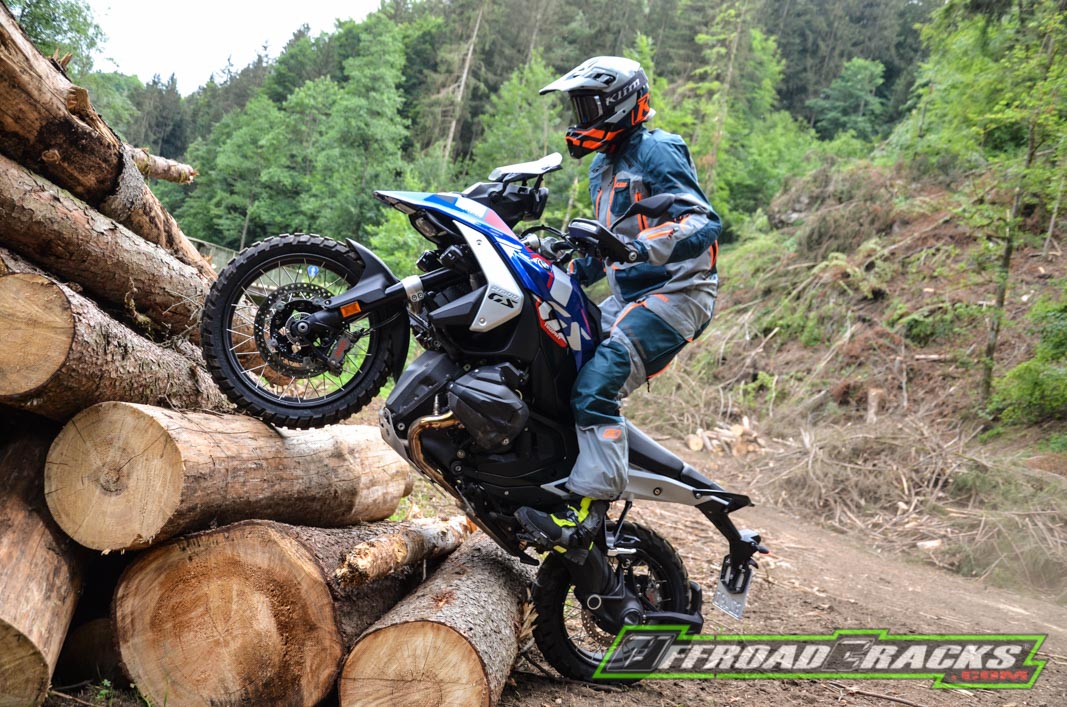
Der für mich wichtigste Aspekt ist stets die Fahrwerksgeometrie in Verbindung mit dem Fahrwerks-Setup, denn das ist ausschlaggebend für die Fahrdynamik in allen Lagen. Der Radstand wächst von 1514 auf 1518 Millimeter, der Lenkkopfwinkel wurde von 64,3 auf 63,8 Grad reduziert während der Nachlauf von 100,6 auf satte 112 Millimetern angewachsen ist. Das hat natürlich Auswirkungen, keine Frage, die gerade für den Offroadeinsatz bei strammem Tempo essentiell sind.

Jetzt heißt es den Boxer mal so richtig laufen lassen und das ist es was er nahezu in Perfektion leistet. Aus dem Drehzahlkeller heraus schiebt er wie eine Dampflok unentwegt an, ohne ein Drehmoment-Loch aufzuweisen – das kann derzeit kein Konkurrent besser. Dementsprechend viel zu schnell fliegt man über die Landstraße, lässt man die Gänge nur so fliegen. Und das Beeindruckende daran ist definitiv wie nebensächlich dieses hohe Durchschnittstempo erreicht wird. Lasse ich sie dann mal wirklich bei voll geöffnetem Ansaug-Luftstrom und maximaler Kraftstoffzuführung von der Kette sind mal ebenso die 200 km/h überschritten. Das beeindruckende daran ist, dass die 1300 GS vermittelt, stets alles im Griff zu haben. Doch dieser Eindruck ist trotz zahlreicher elektronischer Helferlein trügerisch, da dadurch der Grenzbereich immer schmaler wird. Ich darf mich hier vorsichtig als etwas erfahrenen Treiber betiteln und weiß das entsprechend zu handeln, doch auch mir bringt dieser unglaubliche Speed nicht nur Glücksgefühle, sondern regt unweigerlich zum Nachdenken an.
LEISTUNGS- und DREHMOMENTDIAGRAMME
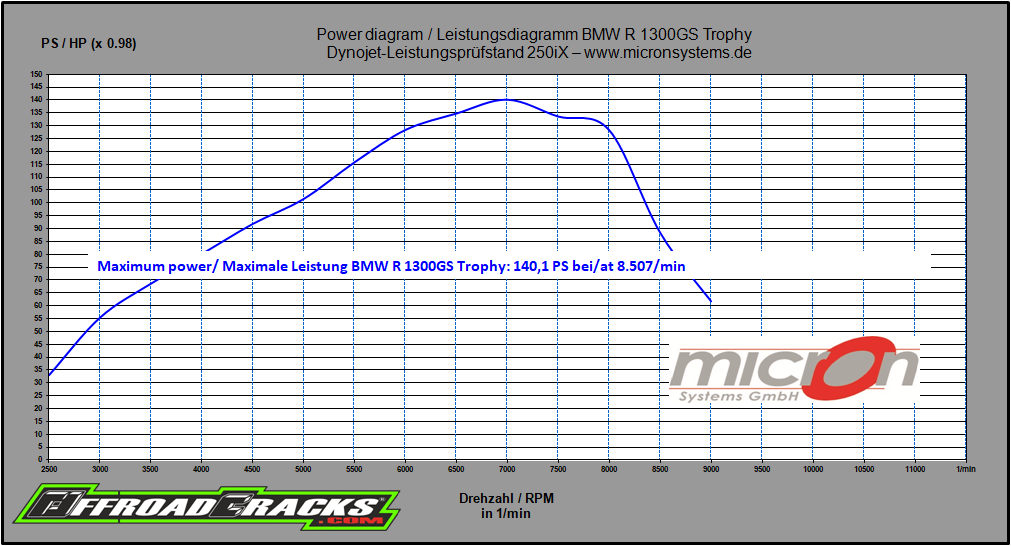
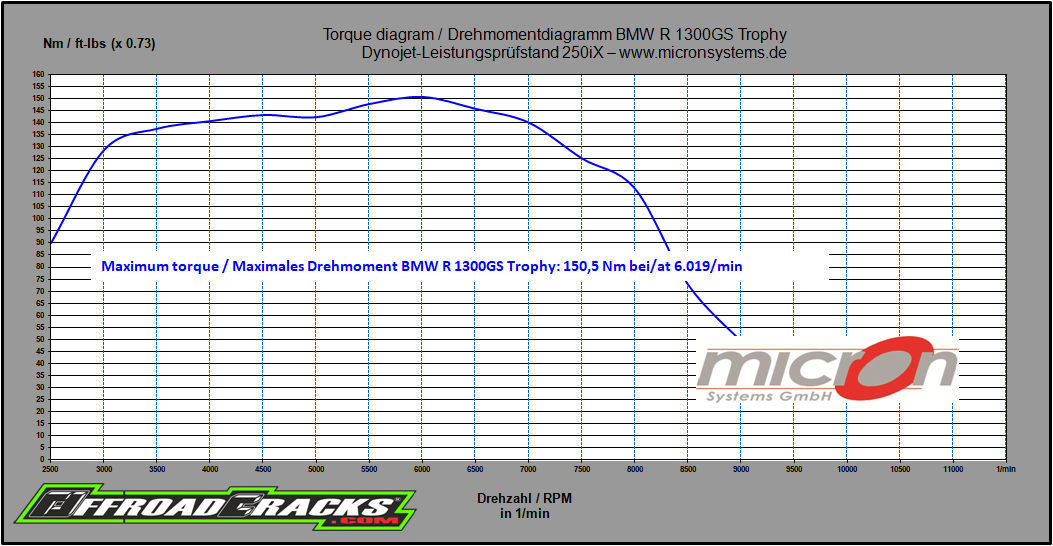
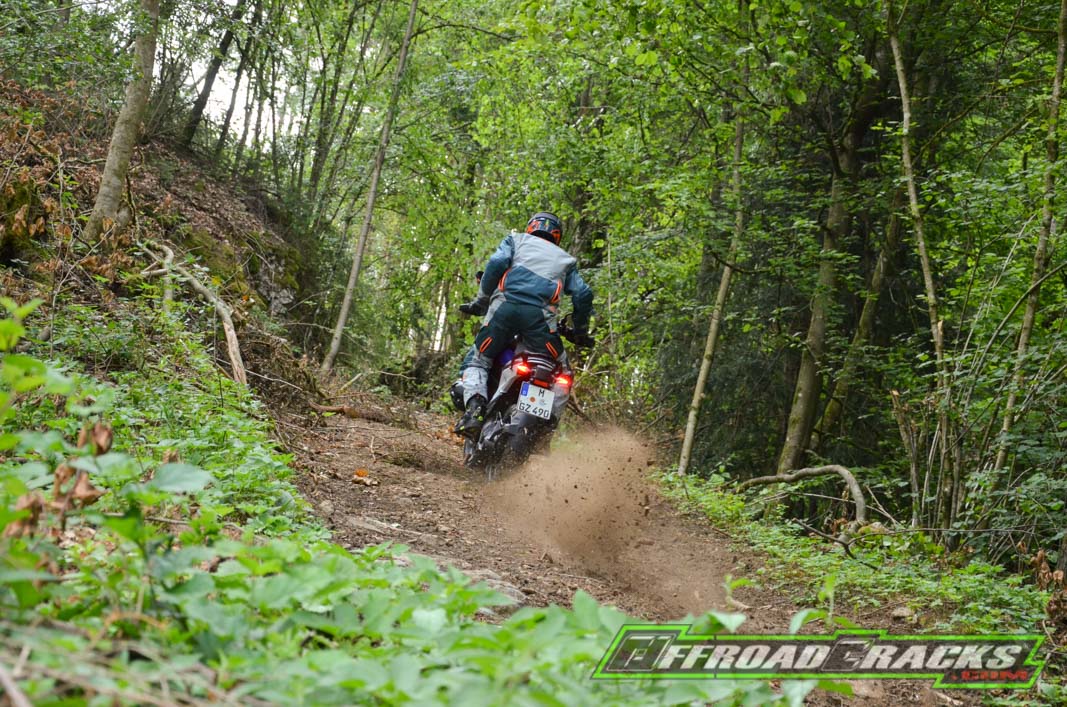
Anker werfen und sofort beißen die radial verschraubten Brembo-Sportbremsen mit einer Vehemenz in die Scheibe, dass man dazu geneigt ist, bei hohem Tempo wenn notwendig, perfekte Verzögerung stets abrufbereit zu haben. Doch eins kann ich sofort sagen, der Eindruck in der Realität trügt. Der Grenzbereich ist näher als man erwartet.
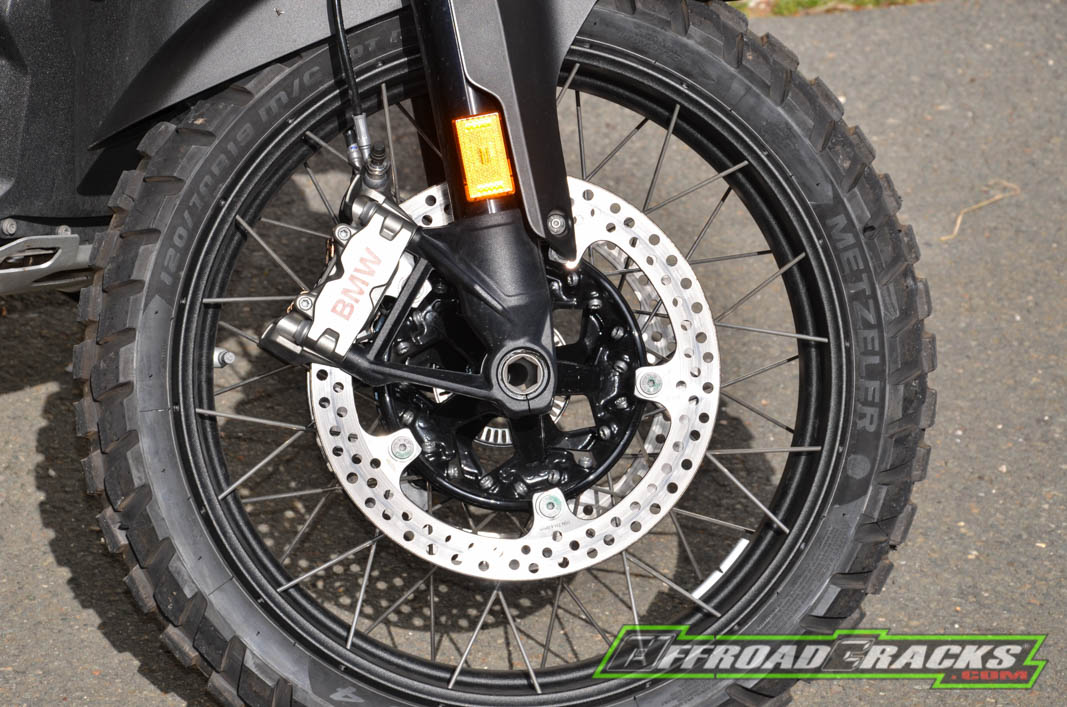
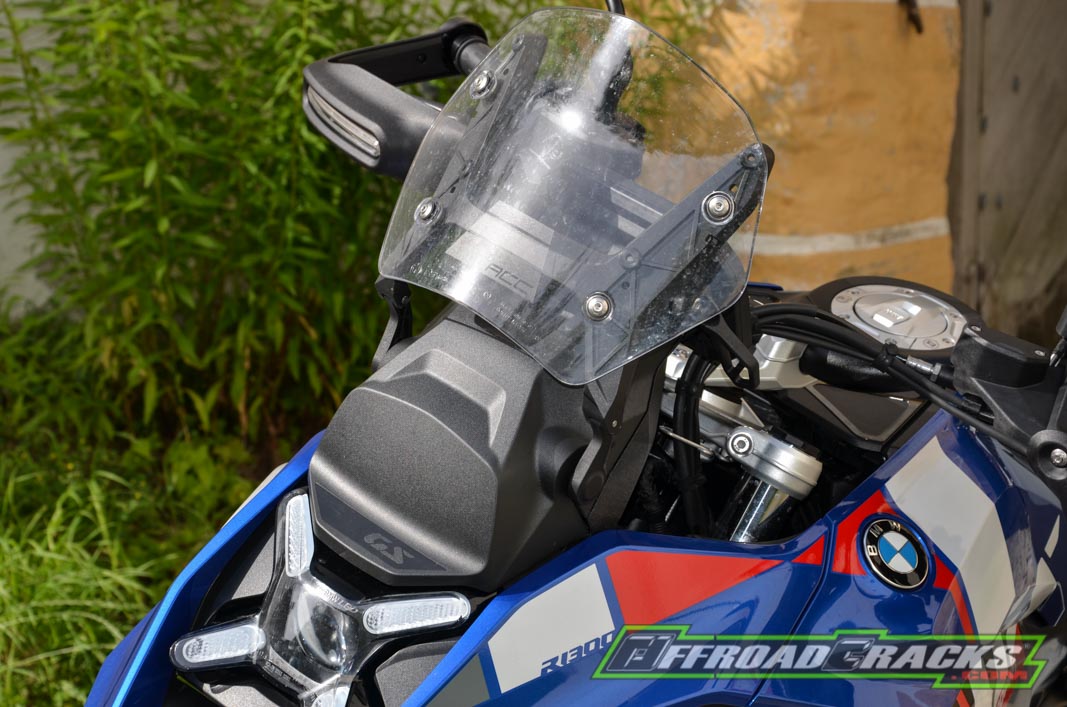
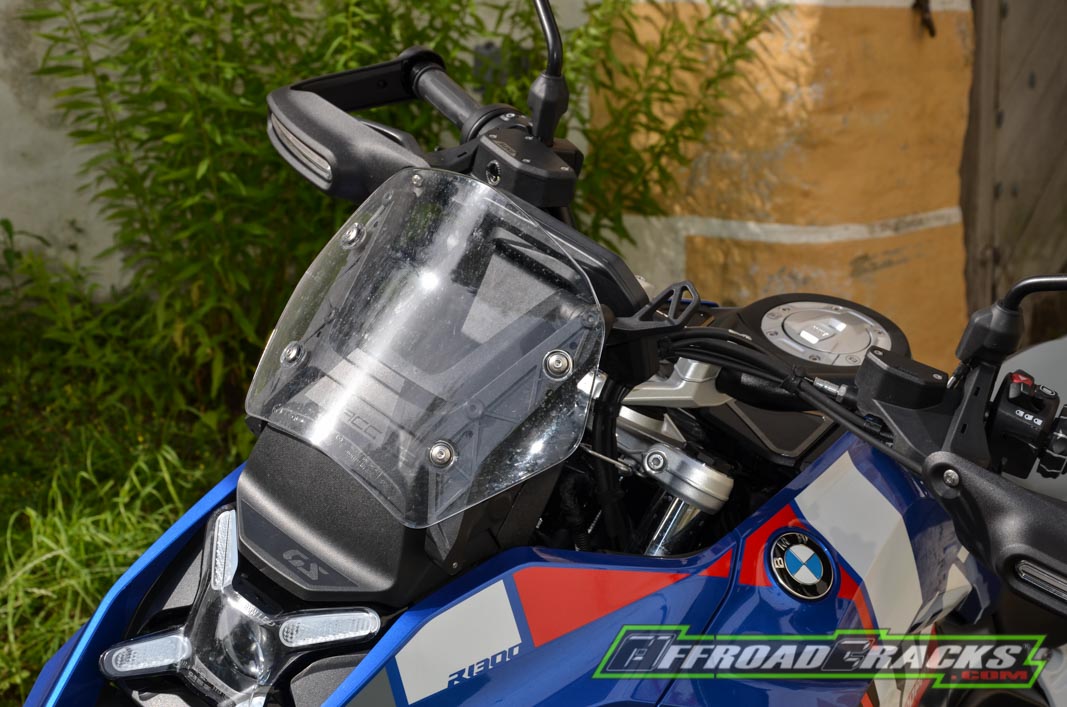
Die beim Trophy-Modell per Hand höhenverstellbare Frontscheibe habe ich anfangs etwas belächelt, doch der Mehrwert bei hohen Geschwindigkeiten auf der Autobahn, wir sprechen hier von weit über 200 km/h, ist definitiv gegeben. Spürbar ist diese Tatsache tatsächlich bereits ab 105 km/h und lässt mein Vorurteil gegenüber dieser kleinen Scheibe unweigerlich versiegen. Einzig der Exzenterversteller der Scheibe ist in meinen Augen keine wirklich charmante Lösung. Das geht definitiv wertiger und technisch auf Dauer zuverlässiger. Was besonders beeindruckt ist das Handling, denn die 1300 GS ist aktuell die einzige Reiseenduro, die derart flink ums Eck schießt, ohne dabei auch nur ansatzweise Unruhe aufkommen zu lassen. Egal wie eng oder lang gezogen die jeweilige Kurve ist oder wenn sich der Kurvenradius unerwartet verkleinert, leicht ein beherztes Korrigieren der Schräglage und weiter geht’s. Im Sport-Modus kann man sich sogar die maximale Schräglage, Verzögerung und der Eingriff durch das DTC optisch im Display darstellen lassen – wer’s braucht.
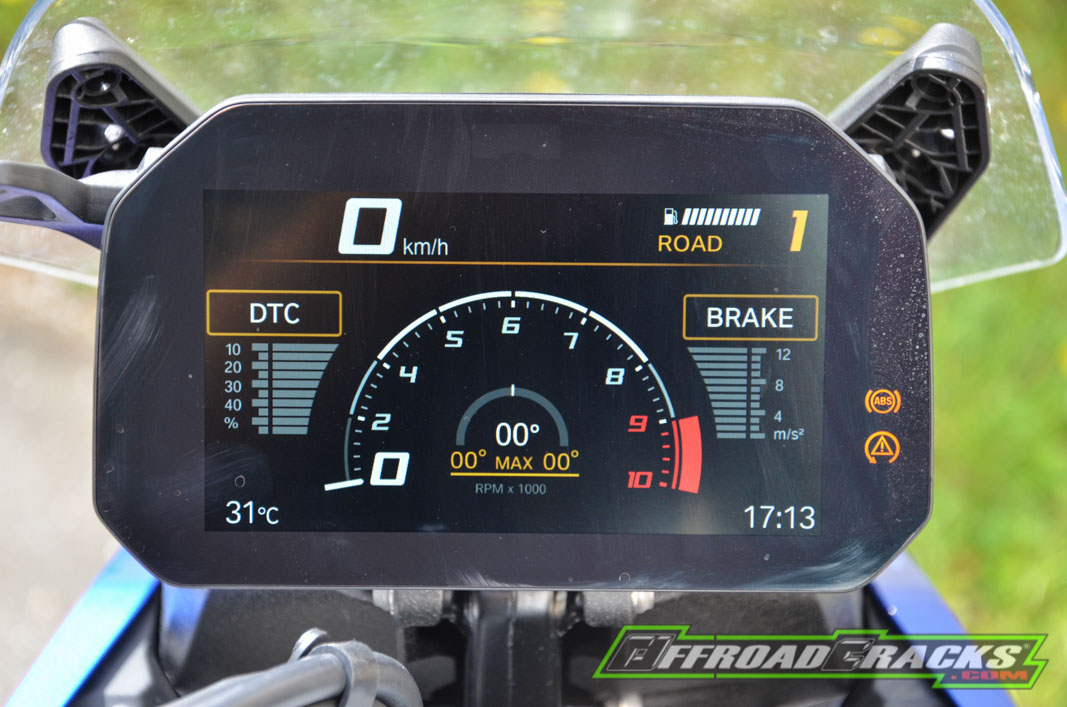
Dazu kommen ein Innovations-Paket mit dem Riding Assistent, Heckkollisionswarnung und den Headlight Pro. Ergänzt durch das Dynamik Paket bietet diese Trophy den Schaltassistent Pro, Fahrmodi Pro, die bereits erwähnten Brembo Sportbremsen, sowie das DAS für eine automatische Fahrwerks- und Höhenanpassung. Die Menüführung ist logisch und zielführend aufgebaut.
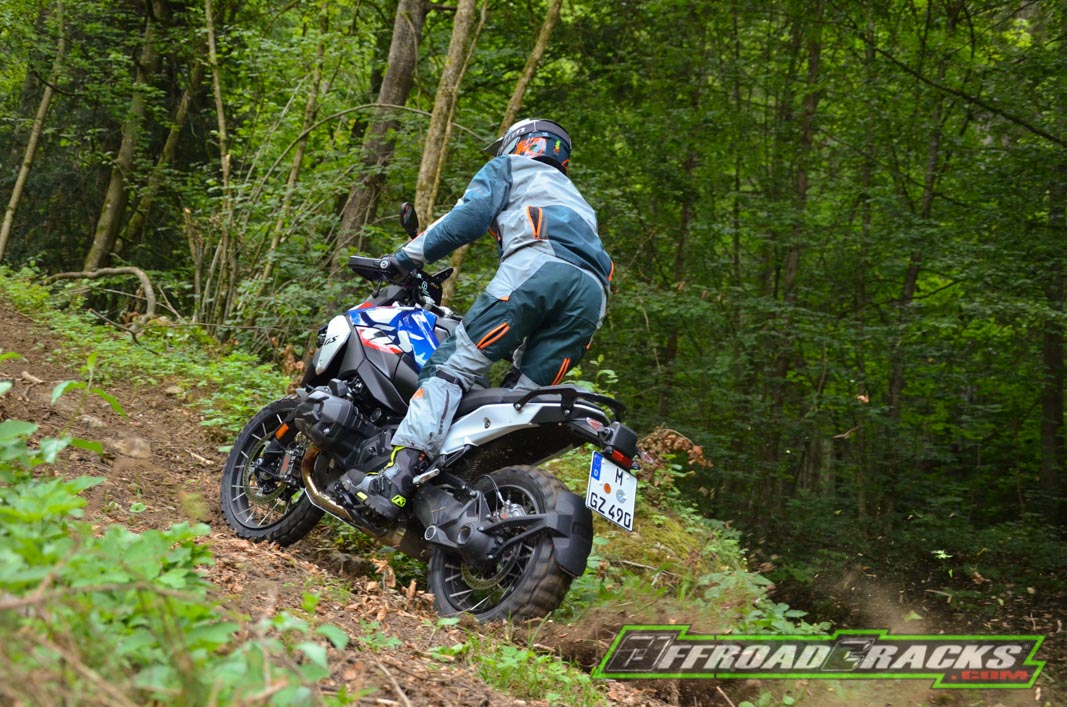
Doch Reiseenduro heißt auch Offroad, so wie es der Hersteller für das Modell Trophy vorsieht. Ich möchte hier jetzt nicht den Platz für das Erläutern der unzähligen Menüoptionen verschwenden, sondern nur auf die wichtigsten Punkte für den Offroad-Einsatz eingehen. Vorab: Alles was unauffällig agiert und seinen Job verrichtet, bedarf keiner extra Erwähnung. Doch jetzt heißt es erst einmal rein in die Fahrmodusvorauswahl und die Unterrubrik Enduro Pro, um diese passend voreinzustellen. Der Motor bekommt volle Leistung, das DTC abgeschaltet, die Wheeliefunktion unterdrückt und das ABS am Hinterrad ist deaktiviert, aber am Vorderrad wird noch Offroad tauglich eingegriffen. Die Motorschleppmoment-Regelung ist in diesem Modus logischerweise automatisch deaktiviert. Mit diesen eingeschränkten Möglichkeiten wächst meine Skepsis für den Offroad-Einsatz zunächst wieder. Die Dämpfungseigenschaften werden automatisch voreingestellt, können aber in jeweils vier Stufen individuell angepasst werden.
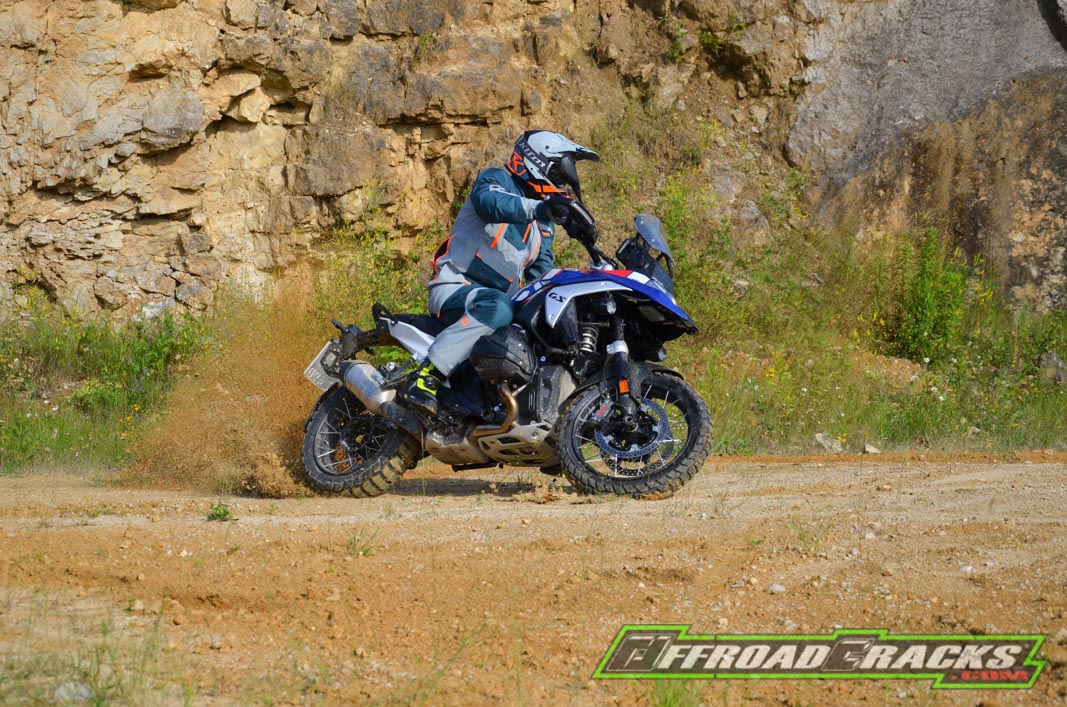
Auf der Fahrt zur Offroad-Spielwiese genieße ich das gewaltige Drehmoment, das mit etwas Vorsatz in engen Kurven eine gezielte schwarze Markierung auf dem Teer pulvert bevor das DTC eingreift – ein Reifenfresser? Ein Problem jedoch stellt sich bei der Straßenfahrt: Im Schiebebetrieb lässt sich aus flotter Gangart heraus ein leichtes Lenkerpendeln trotz Lenkungsdämpfer nicht verschweigen. Hat man dazu noch Längsrillen im Straßenbelag, so läuft die 1300er dieser nach, was man vom Vorgängermodell definitiv nicht kannte. Der lose Untergrund lockt und die 149 Newtonmeter erwecken das Hinterrad zur aktiven Grabenfräse.
Erstaunlich ist wie spielerisch sich der 237 Kilogramm schwere Brocken in anspruchsvollem Gelände bewegen lässt. Die Rückmeldung der Federungselemente ist Offroad gelungen. Auf der Straße erweist sich das Ansprechverhalten bei allen Fahrmodis als etwas unsensibel und bei hohem Schräglagen-Tempo fängt der Paralever trotz sportlichem Dynamik-Pro Modus über Unebenheiten leicht zu pumpen an und bringt Unruhe ins Geschehen. Das sollte das Gewicht abhängig agierende DSA eigentlich besser beherrschen, zumal die Zuladungsgrenze noch lange nicht erreicht ist.
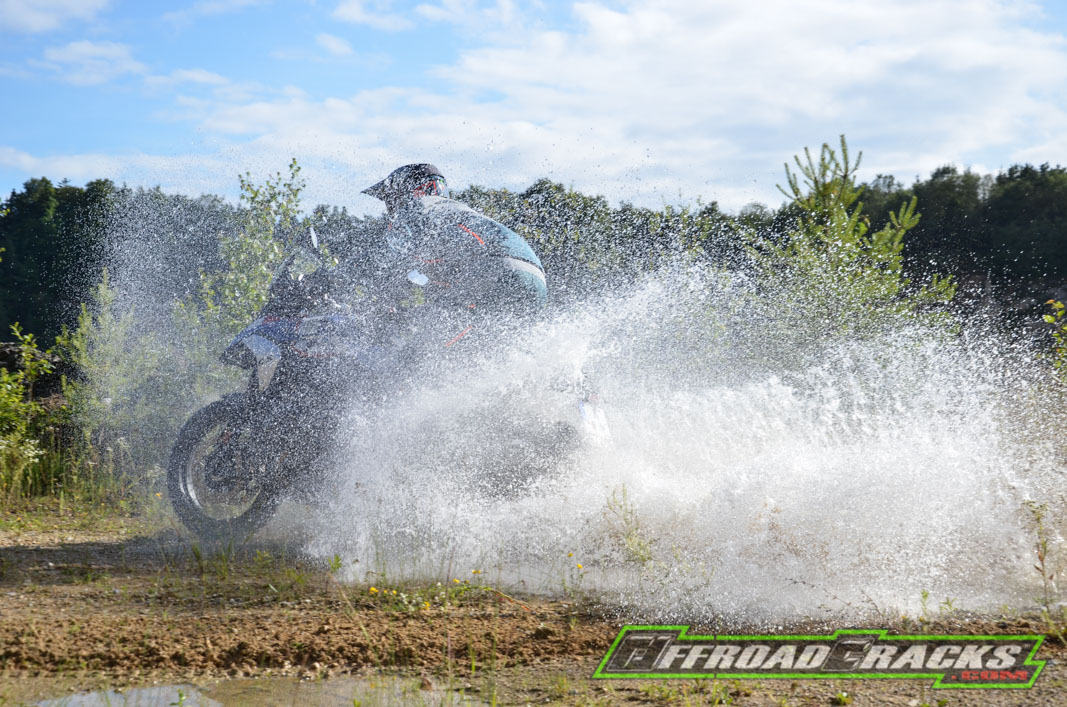
TECHNISCHE DATEN
Technische Daten BMW R 1300 GS Trophy 2024_OC_Logo_optimize
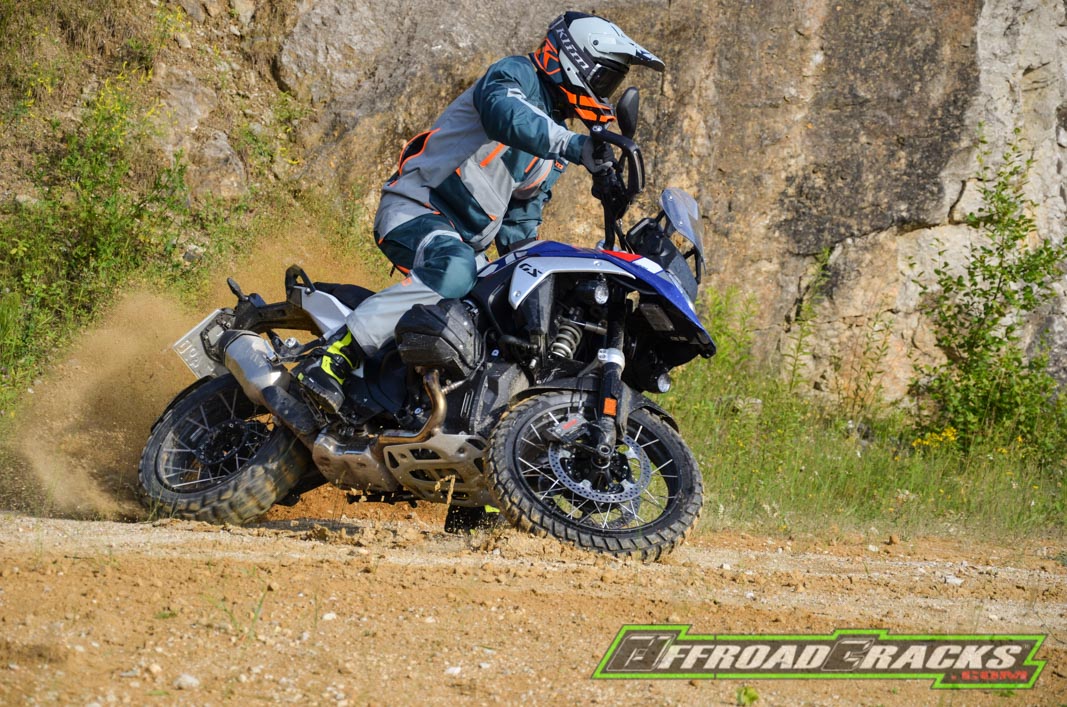
Summa summarum ist die neue BMW R 1300 GS Trophy ein absoluter Angstgegner für die Joghurtbecher- und Supermoto-Fraktion auf der Landstraße und über Pässe. Das mächtige Drehmoment und das erstaunliche Handling machen ihr derart Feuer, dass es gut ist auf der Straße eine Traktionskontrolle sowie eine Motorschleppmomentregelung an Bord zu haben. Das geniale Handling hat natürlich seine Folgen, die zwar nicht dramatisch sind, aber eben auffallen und bei Speed im Gelände mit dem Bayerischen Powerhouse zum Tragen kommen. Die Spielwiese einer GS ist umfangreich und dafür ist sie definitiv gut gelungen.
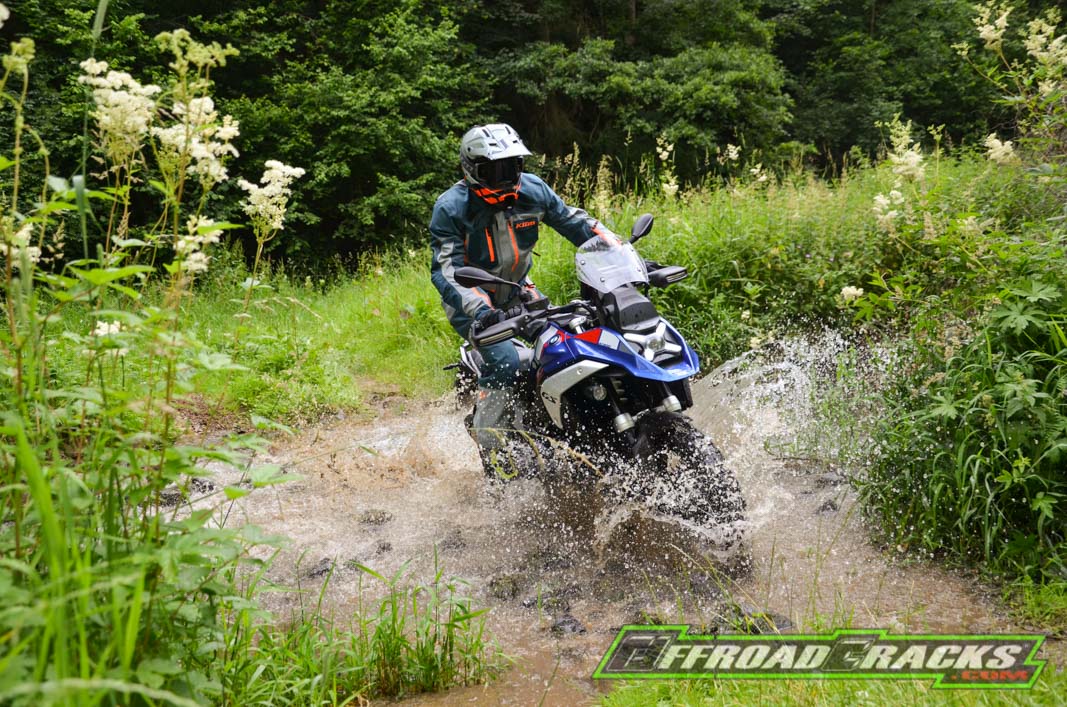
Will ich eine 1300 GS haben? Um ehrlich zu sein, ja. Aber nur um ambitioniert über den Pass zu kacheln oder einfach das bärige Drehmoment in allen Lagen und den damit verbunden unglaublichen Antritt im völligen Temporausch zu genießen. Für die Fernreise würde ich zur neuen 1300 GS Adventure greifen, die mit geänderter Fahrwerksgeometrie gegenüber der Trophy daher kommt.
PLUSMINUSBMW R 1300GS Trophy

PLUS
- Hohe Motorleistung
- Spritzige Leistungsabgabe auf Abruf
- Bäriges Drehmoment
- Sensible Leistungsdosierung
- Hervorragende Bremsen
- Ausgewogene Fahrzeugbalance
- Hebelschützer
- Lenkungsdämpfer
- Erscheinungsbild
MINUS
- Motorschutz
- LED-Blinker im Hebelschützer sturzgefährdet
- Verstellbares Windschild
- Sozius Sitzbank
- Fehlende Höhenverstellung der Fahrer-Sitzbank
- Preisgestaltung
INFO
Der automatisierte Schaltassistent ASA ist erst ab Modell-Jahrgang 2025 als Sonderausstattung verfügbar. Wer die nächste Stufe der Automatisierung noch nicht kennt, hier gleich die Auflösung: Kupplungshebel Fehlanzeige, dafür übernimmt das System das Kuppeln und bei Bedarf das Schalten selbst. Der Modus M lässt die Funktion Fußschalthebel zu, im Modus D übernimmt das vollständig das ASA. Mehrwert? Man wird sehen.
GALERIE – ACTION
GALLERIE – DETAILS
Weitere Infos unter: www.BMW-Motorrad.de
Bilder: OFFROADCRACKS.com
Kleidung & Protektion: KLIM
Fahrzeug-Vorbereitung: BMW Motorrad
Leistungsmessung: MICRONSYSTEMS
„Wir bedanken uns für die professionelle Zusammenarbeit.“
Quelle / Source / Pictures / Bilder: OFFROADCRACKS
![]()

The MUST HAVE of the adventure bike scenery has been the GS series from Bavaria for years. With the 1300, they are breaking new ground that are not causing sensation for Sascha Christof, only.

Here and now, the R 1300 GS Trophy version is at the start. What is causing a sensation here? If you take a seat on it, I don’t have the feeling of sitting on THE TRAVEL ENDURO par excellence first, but rather on a compact streetfighter in a visually inspired off-road design. That’s right, the 1300 has pushed forward with a new centre of gravity and a compactness that was previously unfamiliar with the GS series. The seating position makes it incomprehensibly clear: Full throttel and then it will be wild. Those who had the chance to drive the legendary HP2 could come up with a few similarities here in a free interpretation.

After the test bike was loaded off the truck, the new GS appealed to me so much that I simply had to go on a short five-minute road test. In the first roundabout when accelerating, a yellow lamp suddenly flashes on the display. Briefly irritated, I still keep on the gas and drove back to the editorial office. On closer inspection, I recognize the DTC indicator light. Didn’t the 1300cc GS really have to catch the rear wheel during slight acceleration due to slippage in absolutely dry conditions? How powerful is the torque development here? Well, the Metzeler Karoo 4 with block tread is mounted, which sometimes initiates a slide on the rear wheel earlier than an ordinary road tire. That’s going to be interesting, I thought to myself with a big grin under my helmet.

Tech-Talk: In order to expand from the original 1254 cubic centimeters to 1300, the cylinder bore of the R 1250 GS has been extended by four millimeters and the stroke by three. Then you create some internal pressure and give it a cylinder compression ratio of 13.3, previously 12.5, larger valve diameters and shift-cam technology, which adjusts the intake camshaft profiles for partial and full load depending on speed and load. In total, this has a performance increase of nine hp and a torque increase of six newtonmeters. So we’re talking about 145 hp and a whopping 149 Newton meters of torque. Does this need an adventure bike? If you also consider the weight of 237 kilograms, the new GS achieves a power-to-weight ratio of 1.63 kg/hp, which is not to be sneezed at. By comparison, a light 500cc single-cylinder sports enduro is 2.1 kg/hp and is anything but underpowered. This gives an idea of the potential of the new 1300 on paper. Also new is the sheet metal shell main frame, which replaces the previous tubular space design and thus brings with it increased rigidity and directness. With regard to the chassis and the special peculiarities of the Evo-Telelever, I deliberately hold back here, as it is assumed to be known and would go beyond the scope of this article if explained correctly. However, and then it should not be concealed, the diameter of the fork increase from 37 to 45 millimeters, which also has stiffness reasons. ZF supplies the shock absorbers for the new Evo-Telelever and Paralever.

The most important aspect for me is always the chassis geometry in connection with the suspension setup, because this is crucial for the driving dynamics in all situations. The wheelbase has increased from 1514 to 1518 millimeters, the steering head angle has been reduced from 64.3 to 63.8 degrees, while the caster has grown from 100.6 to a whopping 112 millimeters. Of course, this has effects, no question, that are essential for off-road use at brisk speeds.

Now it’s time to let the boxer really run and that’s what he does almost in perfection. From idle speed, it pushes forward incessantly like a steam locomotive without having a lack of torque – no competitor can do that better at the moment. Accordingly, you fly way too fast over the country roads, if you let the gears fly. And the impressive thing about it is definitely how incidental this high average speed is achieved. If I really let it off the chain with the intake airflow fully open and maximum fuel supply, the 200 km/h speed is also exceeded easily. The impressive thing about it is that the 1300 GS conveys that you always have everything under control. But this impression is deceptive despite numerous electronic helpers, as the limit area is becoming narrower and narrower. I can cautiously call myself a somewhat experienced driver here and know how to act accordingly, but this incredible speed not only brings me feelings of happiness, but makes you think inevitably .
Power- & Torque diagrams



Drop anchor and immediately the radially bolted Brembo sports brakes bite into the disc with such vehemence that you are inclined to always have perfect deceleration ready at high speed if necessary. But one thing I can say right away, the impression in reality is deceptive. The limit is closer than you expect.



At first, I smiled a bit about the height-adjustable windshield on the Trophy model, but the added value at high speeds on the highway, we’re talking about over 200 km/h here, is definitely there. This fact is actually noticeable from 105 km/h and inevitably dries up my prejudice against this small windscreen. Only the eccentric adjuster of the windscreen is not really a charming solution in my eyes. This can definitely be more valuable and technically more reliable in the long run. What is particularly impressive is the handling, because the 1300 GS is currently the only adventure bike that shoots around corners so nimbly without causing even the slightest bit of unrest. No matter how tight or long the respective turn is or if the radius unexpectedly shrinks, it is easy to courageously correct the lean angle and off you go. In Sport mode, you can even have the maximum lean angle, deceleration and intervention by the DTC visually shown on the display – if you need it.

In addition, there is an innovation package with Riding Assist, Rear Collision Warning and Headlight Pro. Supplemented by the Dynamics package, this trophy offers Shift Assist Pro, Riding Modes Pro, the aforementioned Brembo Sport brakes, as well as the DAS for automatic suspension and height adjustment. The menu navigation is logical and purposeful.

But Adventure bike also means off-road, as the manufacturer intends for the Trophy model. I don’t want to waste the space here explaining the countless menu options, but only go into the most important points for off-road use. First of all: Everything that acts inconspicuously and does its job does not need to be mentioned. But now it’s time to pre-select the riding mode and the Enduro Pro sub-category to preset it appropriately. The engine gets full power, the DTC is switched off, the wheelie function is suppressed and the ABS on the rear wheel is deactivated, but the front wheel is still intervened off-road. The engine slip torque control is logically automatically deactivated in this mode. With these limited possibilities, my skepticism about off-road use grows again for the time being. The damping properties are automatically preset, but can be individually adjusted in four stages each.

On the way to the off-road playground, I enjoy the enormous torque, which with a little intent powders a targeted black mark on the tamarc in tight curves before the DTC intervenes – a tire eater? However, there is one problem when driving on the road: in coasting mode, a slight swinging of the handlebars despite the steering damper cannot be concealed from a brisk pace. If you also have longitudinal grooves in the road surface, the 1300 follows them, which was definitely not known from the previous model. The loose ground is tempting and the 149 Newton meters awaken the rear wheel to an active trench cutter.
It is amazing how playfully the 237-kilogram chunk can be moved in challenging terrain. The feedback from the suspension elements has been successful off-road. On the road, the response proves to be somewhat insensitive in all driving modes and at high speeds, the Paralever starts pumping slightly over bumps despite the sporty Dynamic Pro mode and brings restlessness to the action. The weight-dependent DSA should actually be able to handle this better, especially since the payload limit is far from being reached.

TECH SPECS
Technische Daten BMW R 1300 GS Trophy 2024_OC_Logo_optimize
or LINK

All in all, the new BMW R 1300 GS Trophy is an absolute opponent for the superbike and supermoto fraction on country roads and over mountain passes. The powerful torque and amazing handling make it so fired up that it’s good to have traction control and engine brake torque on board on the road. Of course, the ingenious handling has its consequences, which are not dramatic, but stand out and come into play at off-road speed with the Bavarian Powerhouse. The playground of a GS is extensive and it is definitely well done.

Do I want a 1300 GS? To be honest, yes. But only to ambitiously fly over a pass in the alps or simply to enjoy the bearish torque in all positions and the associated incredible acceleration in complete speed rush. For long-distance travel, I would go for the new 1300 GS Adventure, which comes with a modified geometry compared to the Trophy edition.
PLUSMINUSBMW R 1300GS Trophy

PLUS
- High engine power
- Lively power delivery on demand
- Fantastic torque
- Sensitive power dose
- Excellent brakes
- Vehicle balance
- Lever guards
- Steering dampers
- Appearance
MINUS
- Engine protection
- LED turn signals in the lever guard risky during falling
- Adjustable windscreen
- Seat
- Lack of height adjustment of the driver’s seat
- Pricing
INFO
The automated shift assistant ASA will only be available as an optional extra from the 2025 model year. If you don’t know the next level of automation yet, here’s the solution: Clutch lever none, but the system takes over the clutching and, if necessary, the shifting itself. Mode M allows the foot shift lever function, in mode D the ASA takes care of this completely. Surplus value? We’ll see.
GALLERY – ACTION
GALLERY – DETAILS
More informations: www.BMW-Motorrad.de
Pictures: OFFROADCRACKS.com
Gear & Protection: KLIM
Vehicle preperation: BMW Motorrad
Dyno run: MICRONSYSTEMS
„We say thank you for the professional cooperation.“
Quelle / Source / Pictures / Bilder: OFFROADCRACKS












